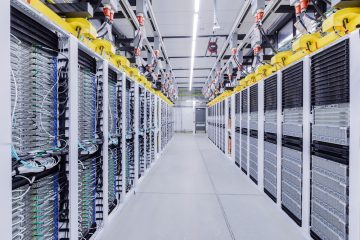Dow, S&P post worst week in months after hawkish Fed spooks investors

U.S. stocks ended sharply lower on Friday, with the Dow and S&P 500 posting their worst weekly performances in months, after comments from Federal Reserve official James Bullard that the U.S. central bank might raise interest rates sooner than previously expected spooked investors.
The blue-chip Dow and the benchmark S&P 500 started the week at record closing levels, but ultimately fell by their most in any week since late October and late February, respectively.
The tech-heavy Nasdaq index also closed lower despite posting its two highest ever finishes in the last five days.
Investor confidence in their existing positions was initially dinged by the Fed’s policy meeting, where it projected interest rate hikes would happen sooner than anticipated, and signaled it was reaching the point where it could begin talking about tapering its massive stimulus – as opposed to just thinking about it.
This was compounded by Bullard, president of the St. Louis Federal Reserve, saying Friday he was among the seven officials who saw rate increases beginning next year to contain inflation.
Inflation, and how the U.S. central bank will tackle it as the country comes out of the pandemic, had been front-and-center of investors’ minds in the run-up to the policy meeting, which ended on Wednesday.
“I’m not surprised to see the market sell off a little bit. I’m never surprised, given the strong run we’ve had for such a long period of time, when you see some periods of profit-taking,” said Tim Ghriskey, chief investment strategist at Inverness Counsel in New York.
The CBOE volatility index, Wall Street’s fear gauge, closed Friday at a four-week high.
“Next week, you will have various Fed governors give speeches, and we’ll have the same thing: some governors will be more hawkish, and some will be more dovish, so you’ll see some back-and-forth,” Ghriskey added.
On Friday, the Dow Jones Industrial Average fell 533.37 points, or 1.58%, to 33,290.08, the S&P 500 lost 55.41 points, or 1.31%, to 4,166.45 and the Nasdaq Composite dropped 130.97 points, or 0.92%, to 14,030.38.
The U.S. dollar strengthened after Bullard’s comments, pushing the index which tracks the greenback against six major currencies to its highest level since mid-April.
While U.S. crude prices – which traditionally suffer from a strong dollar – initially fell on Friday, they rebounded after OPEC sources said the producer group expected limited U.S. oil output growth this year. [O/R]
The upward commodity move didn’t translate into positive sentiment for U.S. energy stocks, with the sector’s index the worst performer on the day. The utilities and financials indexes also fell by more than 2%.
Friday was also “quadruple witching day,” the quarterly simultaneous expiration of U.S. options and futures contracts. It was the largest options expiration in history, noted Randy Frederick, vice president of trading and derivatives for Charles Schwab.
Volume on U.S. exchanges was 14.97 billion shares, compared with the 10.96 billion average over the last 20 trading days.










